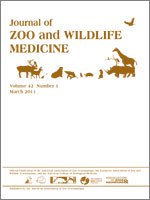Aerococcus viridans, the causative agent of the disease gaffkemia, was a major cause of mortality in lobsters (Homarus americanus) held in tidal impoundments during the 1970s and 1980s. Despite reports of an increase in the mortality of lobsters during impoundment, and the widespread prophylactic use of oxytetracycline against A. viridans, this bacterium has not been detected in active disease surveillance of the Maine postcapture lobster population. However, Photobacterium indicum may be an emerging opportunistic pathogen of stressed lobsters. An acute toxicity trial was conducted as a rapid screening procedure for the potential future use of the antibiotic florfenicol. Based on the results of this experiment, florfenicol appears to be well tolerated in adult H. americanus by intrapericardial injection at the 10–100 mg/kg dose. Oxytetracycline dihydrate is contraindicated by intrapericardial injection at the 10–100 mg/kg dose.
How to translate text using browser tools
1 March 2011
Safety of Florfenicol in the Adult Lobster (Homarus americanus)
David Basti,
Deborah Bouchard,
Anne Lichtenwalner
ACCESS THE FULL ARTICLE
Aerococcus viridans
florfenicol
Homarus americanus
lobster
Oxytetracycline
Photobacterium indicum





